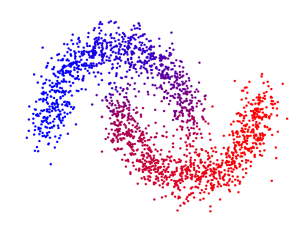After about 6 months or so reading up 2-3 books on Django and going through the tutorials, I’m finally at the point where I comfortably can pursue a website with confidence. Over the last two days, I’ve been setting up a small Amazon instance for demos. Doing all the server, network and security configuration was awesome as I’ve learned most of that in the last 6 months +. I’ve got nginx, postgres and django set up, tonight I form the first url and templates. Exciting! Once I have a domain set up and production web pages, I’ll post a url on my blog this blog and people can test out the application (nature app).
Author Archives: Chris Kottmyer
Data as a Fitness Tool
Recently, I’ve been focusing on improving my life by becoming more fit and eating healthy. I’ve read somewhere that those who record what they eat and dedicate at least 4-5 hours of time in the gym tend to lose more weight and maintain weight for longer periods of time. I think it’s more about changing your attitude to it and realizing that being healthy is a life style.
Since I am a data nerd of sorts, I’ve come to the conclusion that it would be fun to approach this as a data management problem. The first thing I did was get an app called myFitnessPal, which you can download on both Android and IPhone (I have IPhone). It then provides a relatively simple interface to log food as well as a database/search utility to look up food. The app also has the ability to monitor exercise and water intake. I decided to keep track of everything I consumed since mid-November and have kept it up for around 50 some odd days now.
To make this more interesting, I also produced a google spreadsheet containing projections (a technique I learned as a fraud analyst) and used this to project weight in the future. The good news the amount of calories I’ve lost around 40,000 kcal translates to a loss that is significantly lower then the 17 lb that I’ve lost so far (11 lb projection). The bad news is the projections I built are definitely off, typically by about 1-2 weeks.
The way I built the projections is to use BMR calculation to get a base burn rate (before exercise of any sort). I then added food and exercise calculations to this. I take an average (of a few days) that updates every day to get a general sense of net loss rates and then apply that to the future based on the last weight measurement. It’s been off by one week and one pound, which isn’t too bad.
Of course, like any good business or goal, good quality data matters and so I have extra motivation to as my nutritionist states treat the matter like an accountant. That motivation ends up translating into more accountability.
I act liberal with food measurements and conservative with exercise calories. It’s better to be safe then sorry when considering margins of error. One thing I try not to compromise on is getting to the gym or some physically intense event (like Salsa dancing) 3 times a week for about 1-1.5 hours. I force myself to do the activity even if I end up just walking for the duration.
Right now, I’m hoping to keep up this habit and see the results in a few months. I’ve already changed how I view exercise and am looking at potential programs or new ways to exercise (in a more social manner) to reduce things like fatigue (too much cardio in between two days). It seems that by making exercise a habit I’m forced to deal with new problems, which require new solutions and experiences. Definitely seeing benefits from doing this.
Machine Learning in Action: Part 1

I’m interested in learning more about computer programming. Recently, I’ve picked up a book on algorithms and data structures as well as looked into Greenplum and Postgres. I wanted to have a slight change of focus this weekend and picked up Machine Learning in Action over the weekend.
The book has been great so far. It’s written using Python and implements many common machine learning algorithms from scratch. Currently, I’ve gone through 2 chapters, one on KNN and the other on ID3 trees. The later was a bit more challenging then the first, requiring quiet a bit of recursion due to the tree structure involved with that methodology. I like this book so far in that it does a lot of the implementations from scratch, which makes it easier to understand. I still want to get deeper into Shannon entropy and that up to get a better understanding of it.
For those interested in the code behind the book, it can be found here:
https://github.com/pbharrin/machinelearninginaction
Hopefully, I will get to try out the next few chapters. Chapter 4 covers Bayesian methodology.
Best,
Chris
Welcome
My name is Chris. This is my second attempt at blogging and the first case when I’ve tried using WordPress.
A bit about myself. I’m a young working professional that is passionate about computer programming, technology, data and statistics. I’m playful by nature and like to explore different computer programs/languages. I would consider this one of my hobbies. Another passion I have is reading non-fiction on a variety of subjects. Recently the subject of interest has been psychology.
I currently live in Boston and work in Cambridge. I like Boston as a city. My current job is data engineer on a predictive intelligence team. I’m currently really enjoying my work.
I’m also interested in healthier lifestyle. I want to incorporate more exercise and healthy eating habits into daily life. I’ve done quiet a bit of reading into this subject.
Future posts will be focused more on technology, books, tutorials or other things that interest me!
Thanks,
Chris

